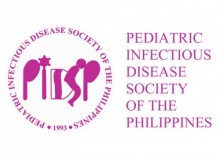Paul Sherwin O. Tarnate, M.D., Keith Roger R. Serrano, RN, Vanessa-Maria F. Torres-Ticzon, M.D. & Kathlynne Anne A. Senen, M.D.
Abstract
Background: Prevention strategies delivered through digital media technology (DMT) have been developed to reduce HIV incidence among young people. However, no best-practice DMT intervention strategies exist in handling HIV prevention programs among young people.
Objectives: To determine the effectiveness of DMT-based interventions in reducing risk-taking behaviours among young people that may predispose them to acquiring HIV and other sexually transmitted infections.
Subjects and Selection Criteria: Randomized controlled trials and quasi-experimental studies with rigorous controls comparing DMT-based interventions and controls on reducing risk-taking behaviors among young people aged 10-24 years were included. Data Collection: Search methods were done on the following: MEDLINE, CENTRAL, Trials Register, Google Scholar, ScienceDirect, TRIP database, HERDIN, reference lists, & local databases until December 2017.
Analysis: Statistical analysis was done using Review Manager Version 5.3, heterogeneity examined, and analyses done under random effects model. Condom use, sexual behavior, number of sexual partners, STI testing, and sexual health knowledge in standardized effect sizeswere calculated with 95% confidence intervals. Data were analyzed in subgroups: Didactics, Modules, Virtual decision-making.
Main Results: Identified sixteenstudies with 7925 subjects comparing DMT interventions and controls. DMT interventions significantly increased condom use (d=0.29, 95% CI 0.18-0.41; p<0.00001), particularly in Didacticssubgroup; and decreased frequency of sexual behavior (d=0.16, 95% CI 0.06-0.26; p=0.002), particularly in Virtual decision-making subgroup.Data significant but heterogeneous for improved sexual health knowledge.There was no statistical difference for decreased number of sexual partners and STI testing.
Conclusions: DMT-based interventions on condom use and frequency of sexual behavior were noted to be effective in reducing risk-taking behaviors among young people.These findings can be appropriately adapted for use in HIV/STI prevention campaigns.
Keywords: Digital media, HIV, STI, Adolescents
https://doi.org/10.56964/pidspj20192001004
| View Full Article in PDF format |
